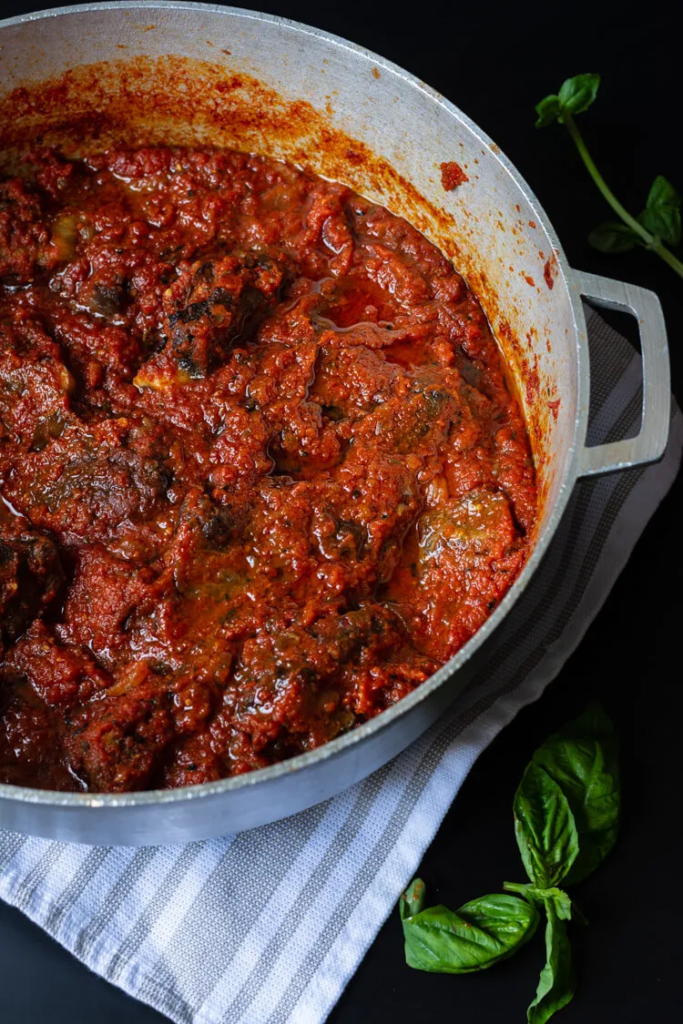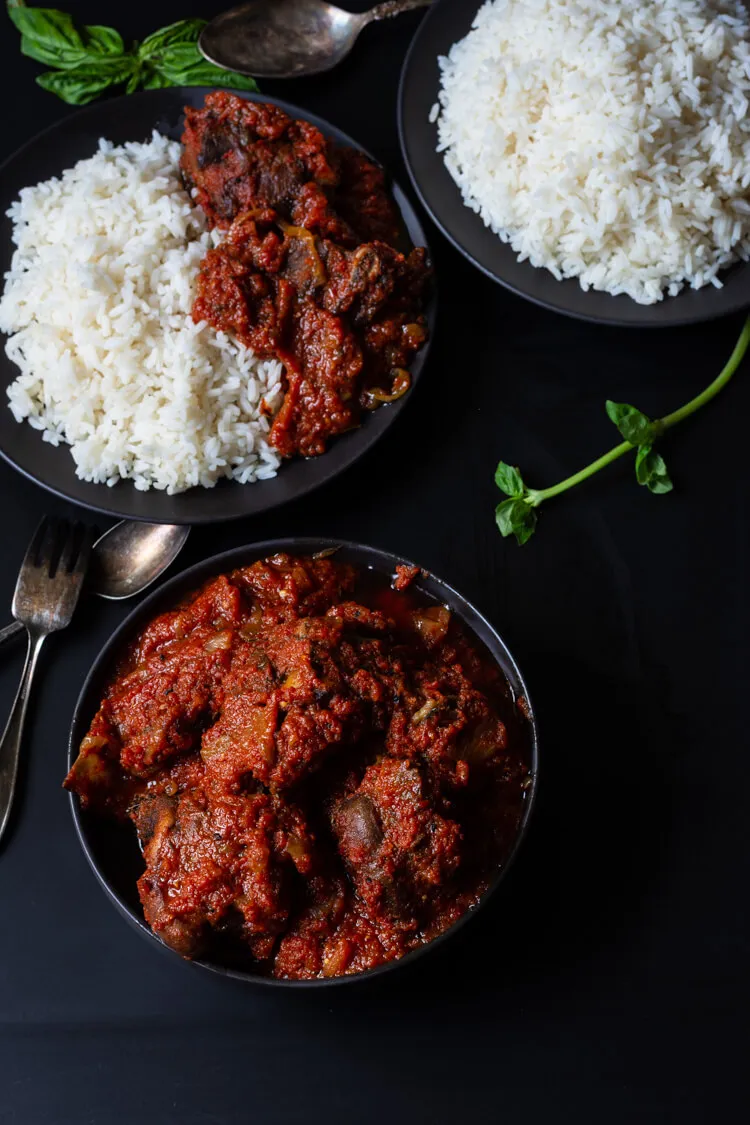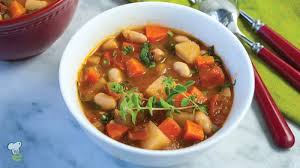A Celebration of Nigerian Tomato Stew: A Culinary Journey
This recipe features a beloved Nigerian tomato stew, traditionally prepared with farm-raised ram meat for a rich, gamey flavor.
Welcome back, everyone! It’s been a while since I’ve shared a new recipe, but I’m thrilled to be back in the kitchen with you.
This tomato stew is a cornerstone in my household, and a constant source of compliments. For years, I’ve kept the recipe close to my heart, even fending off requests from my persistent sisters.
Today, I’m not only sharing this Nigerian tomato stew recipe, but also showcasing a special variation: Ram Meat Stew! The farm-raised ram adds a unique depth of flavor that truly elevates the dish. You all must be very special indeed!
Now, before you brand me a villain, let me assure you, I did eventually share the recipe with my sisters before gracing the internet with it.
After all, a staple dish like this Nigerian tomato stew deserves to be replicated perfectly before venturing out into the world.
As you might imagine, Nigerians can be quite particular about their favorite foods, especially rice dishes! Without a hint of bragging, based on the feedback I’ve received, I believe you’re about to experience the ultimate Nigerian tomato stew.
Tomato stew is a ubiquitous dish across West Africa, with variations reflecting cultural nuances and personal preferences. Compared to ofada stew, another beloved Nigerian red stew, this version is likely more common in Nigerian households due to its ease of preparation.
The unifying thread across these stews is the use of blended tomatoes (sometimes with peppers and onions), cooked in oil with protein. Depending on the cook, the type of oil, vegetables used, stew consistency, and protein choice can all differ.
For this recipe, I opted for ram meat, driven by both nostalgia (and its incredible taste!) and its status as a popular celebratory meat in Nigeria, especially during Eid al-Kabir.
Traditionally, following the Islamic Ramadan fast, it was common to receive ram meat from neighbors as part of their celebrations. Since ram can be expensive, stews featuring it were more prevalent during holidays.
However, many Nigerians who could afford it enjoyed this tomato stew delicacy throughout the year.
Crafting the Perfect Nigerian Tomato Stew
Key Ingredients:
- 2 lbs Braised Ram Meat Chunks (about 907 grams): Ram meat offers a more mature flavor and texture compared to lamb. While ewe (female lamb) boasts a stronger flavor, it’s often tougher. Ram is my preferred choice for this stew. Since I source my meat locally, I have the privilege of selecting the exact cut. If you’re limited to a grocery store, opt for stew-cut lamb or beef as a decent substitute. Old hens and even stew-cut pork can also work. However, for the most authentic experience, if ram meat isn’t available, goat meat (chevon) is the closest in flavor profile. In my household, we use goat and ram interchangeably, and the stew is equally delicious with either.
- 3.5 lbs Plum Tomatoes (about 1570 grams): This recipe was created during summertime tomato season. In-season tomatoes are naturally sweet and juicy, perfect for stews. I often use roma or plum tomatoes due to their low moisture content and sweetness when ripe. If these aren’t available, use any low-moisture, sweet tomato variety you have on hand. If fresh, out-of-season tomatoes are your only option, skip them and opt for good quality canned whole tomatoes. Tomatoes are typically canned at peak season, capturing the flavor and sweetness of fresh, in-season tomatoes. Off-season “fresh” tomatoes are likely greenhouse-grown (often sacrificing flavor), and while usable in a pinch, they won’t yield the best results.
- 2 Large Onions
- 2 Large Bell Peppers: In Nigeria, the preferred pepper is called “tatashe” by the Yoruba people. Tatashe is a red bell pepper variety with thinner skin but a more intense, chili-like spiciness.
- 4 Scotch Bonnet Peppers
- 3 Garlic Cloves
- Ginger: Small Thumb Size
- ½ Cup Flavorless Oil: I used grape seed oil for this recipe, as it was readily available. Other neutral oils like canola, vegetable, avocado, or corn oil can also be used.
- 1 ¾ Cups Lamb Stock: I used the leftover stock from braising the ram, but store-bought stock is perfectly acceptable.
- 1 Teaspoon Curry Powder
- 2 Teaspoons Dried Thyme
- 1 Teaspoon Bouillon Powder or Cube (any kind)
- Salt (to taste)


The Recipe:
- Blend the Tomato Mixture: Combine the tomatoes, one large onion, bell peppers, scotch bonnet peppers, garlic, and ginger in a blender. Set the blended mixture aside.
- Broil and Braise the Meat: Preheat your oven to broil. Arrange the braised ram chunks on a baking sheet and broil until browned on both sides. Set the browned meat aside for later. (You can find a detailed guide to braising meat online, or refer to the recipe notes below for a quick overview).
- Prepare the Tomato Paste: In a large pot or Dutch oven, heat oil over medium heat. Add the blended tomato mixture and cook, stirring occasionally, until it thickens into a paste. The mixture should reduce by about half. While the tomato mixture simmers, slice the remaining large onion and set it aside.
- Caramelize the Onions and Add the Tomato Paste: Once the tomato mixture has reduced, transfer it to a separate bowl and set it aside. In the same pot you used for the tomatoes, heat fresh oil over medium heat and add the sliced onions. Sauté the onions until softened and caramelized, with a beautiful golden brown color. Add the reserved tomato paste back to the pot with the caramelized onions and cook for an additional 5 minutes over low-medium heat.
- Incorporate Stock and Spices: After 5 minutes, pour in the lamb stock and season the stew with bouillon powder, dried thyme, and curry powder. Stir well to combine and simmer for an additional 10 minutes on low heat.
- Introduce the Meat: After 10 minutes of simmering, add the cooked ram meat back to the pot. Stir gently to combine and simmer the stew, covered, for another 5 minutes on low heat. Season the stew with salt to taste, adjust according to your preference. Simmer for an additional 5 minutes, covered.
- Enjoy! Your Nigerian tomato stew is complete! Traditionally, it’s served alongside boiled rice, beans, plantain, starchy root vegetables like yam, or even soups enjoyed with fufu.
This flavorful stew is a delicious celebration of Nigerian cuisine. With its vibrant blend of spices and fresh ingredients, it’s sure to become a favorite in your kitchen as well.
So grab your favorite vegetables and protein, and get ready to embark on a delicious culinary journey to Nigeria!

The Verdict
This Nigerian tomato stew is a true crowd-pleaser. It’s rich, flavorful, and incredibly versatile. The smokiness from the ram meat adds a unique depth that truly elevates the dish.
But feel free to experiment with different proteins! Whether you choose lamb, beef, goat, or even chicken, this stew is guaranteed to be a hit.
Tips from the Kitchen
- Don’t be afraid to adjust the spice level to your preference. Scotch bonnet peppers pack a punch, so start with less and add more to taste.
- Leftovers store beautifully in the fridge for up to 3 days, or freeze them in portions for quick and easy meals later.
- This stew is a blank canvas for creativity! Add your favorite vegetables like chopped spinach, green beans, or even corn.
So, what are you waiting for? Get cooking and experience the magic of Nigerian tomato stew for yourself! I’d love to hear about your variations and feedback in the comments below.
Happy cooking!
| Nigerian Tomato Stew (Nigerian Red Stew) Recipe This Nigerian red stew recipe features my favorite Nigerian tomato stew using farm raised ram meat which adds a distinct, delicious gamey flavor! Prep Time | Cook Time | TotalTime 10minutes mins 1hour hr 1hour hr 10minutes mins Course: Dinner, Lunch, Main Course Cuisine: Nigerian Servings: 10 people Calories: 353.4kcal Ingredients 2 lbs Braised ram meat chunks 3.5 lbs Plum tomatoes (about 1570 grams) 2 large Onions 2 large Bell peppers 4 Scotch bonnet peppers 3 cloves Garlic Ginger small thumb size ½ cup Flavorless oil ( I used grape seed oil) 1 ¾ cups Lamb stock (I used the liquid from braising the ram) 1 tsp Curry powder 2 tsp Dried thyme 1 tsp Bouillon Salt (to taste) Instructions Blend the tomatoes, 1 large onion, bell peppers, scotch bonnet peppers, garlic and ginger, and set aside. Broil the braised lamb chunks in the oven until it is browned on both sides then set aside. In a large pot Cook the blended tomato mixture on medium heat until it forms a paste. It should reduce to about half its volume. While the blended tomato mixture is reducing, slice one large onion and set aside. Once the tomato mixture has reduced, scoop the paste out of the pot and set it aside. In the same pot, heat the oil on medium heat and caramelize the onions until it is mostly softened. Add the tomato paste to the caramelized onions and add the cook on low- medium heat for 5 minutes. After 5 minutes, pour in the stock, and season with bouillon, dried thyme and curry powder. Stir and continue to cook for another 10 minutes on low heat. After 10 minutes, add in the cooked ram, stir, and cook the stew covered for another 5 minutes on low heat. Taste for salt and adjust to your preference, and cook for another 5 minutes covered. After 5 minutes, you stew is ready to serve! Notes Nigerian Tomato Stew Nutrition Nigerian tomato stew calories and nutrition information is shown below. Ingredients listed above were enough for about 10 servings (could be more depending on how small your serving sizes are). |
Notes
Nigerian Tomato Stew Nutrition
Nigerian tomato stew calories and nutrition information is shown below. Ingredients listed above were enough for about 10 servings (could be more depending on how small your serving sizes are).
















Leave a Reply